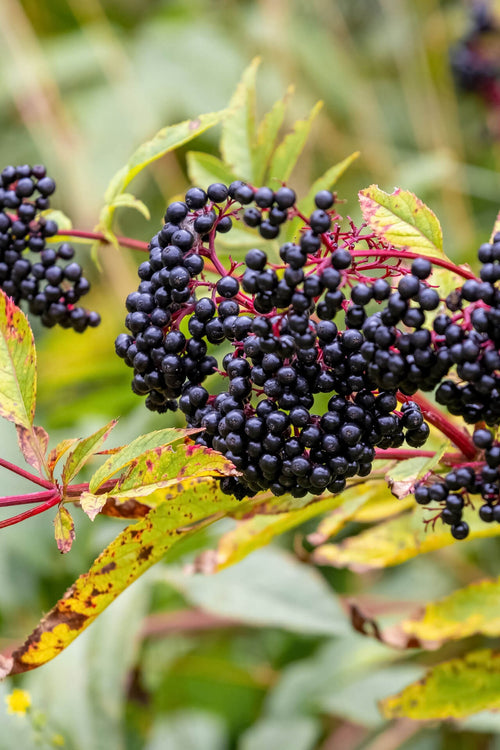Wildlife gardening is a transformative approach to landscaping that goes beyond aesthetics to create environments that support and attract a diverse range of native wildlife species.
By thoughtfully designing your garden to provide food, shelter, water, and nesting opportunities, you can play a significant role in helping promote the health of local ecosystems. In this guide, we delve into the essence of wildlife gardening, its benefits, fundamental principles, and how you can start on this journey to create a safe place for wildlife in your backyard.
The Essence of Wildlife Gardening
Wildlife gardening is an intentional and purposeful practice of creating outdoor spaces that mimic natural habitats, fostering coexistence between humans and wildlife. It involves planting native plants, providing water sources, building shelter, and minimizing chemical use to encourage various birds, insects, pollinators, and other animals to thrive in your garden. Wildlife gardening goes beyond simple beauty; it's about fostering a connection with nature and becoming a steward of your local environment.
Benefits of Wildlife Gardening
The rewards of wildlife gardening extend far beyond the aesthetic appeal of a vibrant and dynamic garden:
Biodiversity Conservation: Wildlife gardening supports native species and helps maintain a healthy ecosystem balance. Creating suitable habitats contributes to the survival of essential pollinators and other wildlife.
Pest Control: Many wildlife species, such as birds and insects, are natural predators of pests that can harm your plants. Encouraging these natural pest control agents reduces the need for chemical intervention.
Ecosystem Services: A thriving garden contributes to ecosystem services like pollination, seed dispersal, and soil health, benefiting your garden and the larger environment.
Education and Awareness: Wildlife gardening offers opportunities to learn about local flora and fauna and fosters an understanding of the intricate relationships within ecosystems.
Connection with Nature: Spending time in a wildlife-friendly garden provides a chance to observe and appreciate the beauty of the natural world up close.
Principles of Wildlife Gardening
Wildlife gardening is founded on fundamental principles that guide your design and care practices:
Native Plants: Incorporate native plants that are well-adapted to your region's climate, soil, and wildlife needs. Native plants provide essential food sources and habitats for local wildlife.
Plant Diversity: Choose a variety of plant species that bloom and fruit at different times of the year. This provides a consistent food source throughout the seasons.
Water Sources: Include water features like bird baths, ponds, or small gardens. Fresh water is essential for drinking, bathing, and attracting wildlife.
Shelter and Cover: Create sheltered spaces with dense vegetation, rock piles, and shrubs to protect from predators and weather conditions.
Nesting Opportunities: Install birdhouses, nesting boxes, and areas of tall grasses where birds and other animals can build nests.
Avoid Chemicals: Minimize using pesticides, herbicides, and synthetic fertilizers. These chemicals can harm both wildlife and the overall health of your garden.
Sustainable Practices: Practice sustainable gardening methods, such as composting, mulching, and proper watering techniques.
Starting Your Wildlife Garden
Embarking on a wildlife gardening journey requires careful planning and execution:
Research: Learn about the native plants, birds, insects, and other wildlife in your area. Understanding their needs will guide your plant choices and habitat creation.
Garden Design: Plan the layout of your garden, considering the placement of water features, sheltered areas, and native plants.
Plant Selection: Choose a mix of trees, shrubs, perennials, and groundcovers. Research which plants attract specific wildlife species and provide the required food and shelter.
Maintenance: Regularly care for your garden by weeding, pruning, and providing appropriate water. Let some areas of your garden remain wild to create natural habitats.
Observation: Spend time observing the wildlife that visits your garden. Document their behaviors and interactions to learn more about their preferences.
Conclusion
Wildlife gardening offers a profound way to engage with nature and contribute to conservation efforts.
By creating a haven for local wildlife, you become a steward of your environment, supporting essential species and promoting the health of ecosystems.
As you nurture your garden, you'll witness the magic of observing birds, butterflies, bees, and other creatures as they thrive in the habitat you've carefully crafted. Through wildlife gardening, you're not just cultivating a garden; you're acquiring a deeper connection with the natural world and positively impacting the planet.



















































